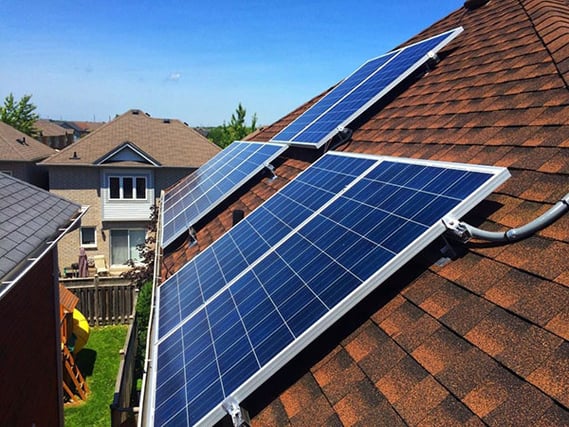The catch word phrase these days is "everything should go green." The dictionary defines green in relation to the environment as: "tending to preserve environmental quality (as by being recyclable, biodegradable, or nonpolluting)."
In community associations, each individual can make a positive impact on our environment, and in some cases, we can save money by going green. Imagine supporting a cleaner and more efficient community and being a steward for its environmental health.
As we think about green community initiatives, we must consider the cost of making and keeping ourselves green. It takes the commitment of the board of directors and the community members to make a green community program work.
All efforts focused on Green Communities Philosophy can make a difference in not only your community but also the world around you.
The management company for the community association should be committed to "green sustainable communities" and have already developed a paperless technology system that reduces the need for the more traditional paper form of communication in favor of the electronic version.
In the past, property management companies had drawers upon drawers of files containing file after file of important information.
Today, virtually all that information can be stored digitally, and several filing cabinets full of information can be stored on a computer's hard drive.
What does that mean to the green community? It means that they have just saved reams of paper, the ink to print it, and the energy the copier used to print the paper. In other words, every step we take to save the environment and use less energy is a contribution to a greener community. It all adds up.
Implement Green Board of Directors Meetings
Using less paper for meetings is a great way to be more eco-friendly. An example would be the board that has reduced the multiple pieces of paper used in creating board packets for meetings. In some cases, what took 50 to 100 pages can now be as little as 8 pages.
The rest should be available electronically, and the board has reviewed it prior to the meeting, or the manager can show them the information digitally.
This method saves time and money and contributes to a green community. In many cases, a document is created and subsequently reviewed by multiple people but never printed.
Did You Know? If you do not use one ton of paper, you will save 17 trees, 380 gallons of oil, 3 cubic yards of landfill space, 4000 kilowatts of energy, 7000 gallons of water, and 60 pounds of air pollutants.
It is possible to have meetings via the telephone or email; however, you must consider availability for members and compliance with any state laws that regulate electronic meetings. By holding electronic meetings, you can save the association time and money and the volunteer board members more time with their families.
Paperless technologies coupled with state-of-the-art property management software can enable a community to be greener. A Board member can quickly look at the financial health, deed restriction violations, and all primary management areas of the association from their computer without ever printing a piece of paper.
In fact, board members should have access to more information digitally than ever before. In this case, green information means more information.
Have a Green Community Energy Reduction & Recycling Plan
A community has the ability to evaluate and control a number of issues to make a positive impact by adopting a green philosophy.
Associations responsible for providing the waste disposal contractor should select one that has a recycling plan. For years, almost all waste disposal companies have been using recycling techniques. Use this as an important component for selecting a contractor and work with your community members to utilize the recycling programs.
Did You Know? Recycling a ton of plastic bottles saves 1,000-2,000 gallons of gasoline, or enough energy to run a refrigerator for a month.
Energy Consumption Audit
An energy consumption audit of your community is very simple to do. Conduct an energy audit of your association. It is very simple to do. In reviewing most energy bills, you can see consumption and historical consumption.
Look at the possibilities of developing an energy plan for the association that encourages members to use renewable energies or to inventory their energy consumption and develop an energy reduction plan.
Invest your community in renewable energy sources. If the demand for renewable energy increases, the energy industry will move to accommodate the demand. The association board of directors has the ability to shape green communities and working with the members should exercise that ability.
Your management company should work with your power vendors in regulated and deregulated communities to get the best price available and to work with power companies that are concerned about the environment.
They should also work with them to conduct an energy audit to determine those areas where we can save money and energy.
Each community is different and some are larger energy consumers than others. Here are a few areas to review to help make your community green.
Outside Lights
- Are they solar powered? If not, how much would it cost to change them to solar? This would also help in the event of a sustained power outage.
- Are you using energy efficient light bulbs?
Inside Lights
- Are they turned off when not in use? Consider changing the switches to motion switches or timers.
- Are you using energy efficient light bulbs?
Electronic Equipment
Electronics usually have a power saving mode but even with this mode, they still consume electricity. Be sure electronics are switched off when not in use.
Pools
- Are timers being used for heated pools and hot tubs or are they being heated year round?
- Are the lights energy efficient?
Community Center
- How often are the HVAC filters changed?
- How old is the system? Older system fan motors and compressors were constructed when energy consumption was not a concern.
- Are appliances turned off when not in use?
Tennis Court
- Are there Lights? Are they energy efficient? Could they be solar powered?
Indoor Recreation Facilities
- Is there an HVAC system? Is it energy efficient? Does it need to be changed to be more efficient?
- Is the system serviced regularly?
- Are the lights energy efficient?
Gates
Electric gates are usually easy to convert to solar and not very expensive. In the event of long-term power outages, electric solar powered gates can be very useful.
Park Restrooms
- Is the water heater energy efficient?
- Are the lights energy efficient?
- Is the water use efficient or could it be reduced?
Final Thoughts
These have been just a few examples of the steps a community can take to adopt a green community philosophy. Communities need to be aware of their energy consumption, recycling possibilities and the steps they can take to be proactive in creating green communities.




